Air Source Heat Pumps Explained
An air source heat pump (ASHP) is a modern way to heat your home. In the right property, an air source heat pump can be a low-carbon and cost-effective solution for space heating and hot water – potentially delivering significant savings on household energy bills.
Air source heat pumps are suitable for a variety of homes, as the appliance itself is relatively simple and affordable to install versus other types of renewable technology. Nevertheless, they may not be the best solution for every project.
So, it’s important to do your research before installing an air source heat pump to ensure it will perform effectively for your home and household.
A range of factors will contribute to your decision on whether an ASHP will work for you, including the size of the house, insulation levels and the type of emitters you’re using. Pairing the appliance with other sustainable options, like solar thermal panels, could help to further reduce running costs and increase the overall efficiency of your heating system.
This in-depth guide addresses key things to consider when deciding whether an air source heat pump will suit you.
What is an air source heat pump?
An air source heat pump is a low-carbon central heating system. Powered by electricity, this renewable technology functions in a similar way to a fridge, but in reverse.
Air source heat pumps extract warmth from the outside air to provide space heating and hot water for the home. What makes them an attractive, efficient option for homeowners is that, for every unit of electricity they use, they can deliver up to four times more heat energy.
In the right property, an air source heat pump can reduce bills and deliver low-carbon, sustainable heating.
What types of air source heat pump are there?
There are two main types of air source heat pump: air-to-water and air-to-air.
In the UK, the most popular system is an air-to-water heat pump. This outputs to a cylinder or thermal store, which then supplies the heat emitters or domestic hot water (for taps, showers etc). This article focuses predominantly on air-to-water heat pumps.
The alternative is an air-to-air heat pump. With this system, the heat from outdoor air is transferred into an incoming supply of fresh warm air. This type can often also work in reverse as an air conditioning unit for summer cooling.
Air-to-air heat pumps are cheaper to install, but require bulkier internal equipment and can be noisy. You will also need a separate system to provide your domestic hot water.
Before buying a heat pump: the importance of insulation
Heat pumps work best in airtight, well insulated houses. So, whether you’re self building or renovating an existing house, the first step is to get the building fabric right.
Before you specify a heat pump, it’s best to focus on getting the key ingredients of good insulation and airtightness levels in place to prevent warmth escaping from your living space.
Once you’ve addressed the building’s performance, you can start to think about how to power your central heating system. And that can include renewables.
How do air source heat pumps work?
An air-to-water heat pump works by using a fan to suck up warmth from the outside air, before passing it through a compressor to booost its temperature.
“The heat pump fan blows air over a coil, which contains a working fluid that absorbs the warmth. This is condensed using an electric compressor to increase its temperature, before being passed through a heat exchanger to provide warm water for the central heating system,” says Brian Horne, domestic energy expert at the Energy Saving Trust.
The heat produced by an air source heat pump is at a lower temperature (approximately 35C) than conventional boilers. AHPs are therefore best used in tandem with underfloor heating or oversized radiators as the emitters, as they have a larger surface area that works efficiently with low-temp heat sources.
How efficient is an air source heat pump?
A heat pump’s efficiency level is measured according to its Coefficient of Performance (COP). The COP indicates the amount of usable energy extracted from the air compared to how much electricity is used to power the pump.
For example, a COP of three means that for every one kilowatt (1kW) of electricity used, the air source heat pump is producing 3kW of heat.
Modern heat pumps use improved technology and better refrigerant fluids to maximise performance – with some systems achieving a COP of 4 or 5 under lab testing.
Read more: Best performing air source heat pumps in the UK 2023
Bear in mind, however, that real-life performance depends on a range of factors, including the time of year, how well-insulated your house is and what proportion of the energy is being used for domestic hot water.
Manufacturers have responded to this by providing a Seasonal Coefficient of Performance (SCOP) that attempts to account for variation across the year.
“While the SCOP is more detailed, it’s still a benchmark that’s been developed under controlled conditions rather than a real-life scenario,” says renewables expert David Hilton from Heat and Energy.
Year-round air source heat pump performance
The efficiency of an air source heat pump varies depending on the time of year, as it’s harder to extract useful warmth when it’s very cold outside.
That’s why we now use a Seasonal Performance Factor (SPF) to better understand heat pump performance. This measures the ratio of heat generated to electric input over the course of the heating system.
A heat pump’s SPF is calculated by dividing the total annual heat output in kWh by the total annual electrical input in kWh.
Published data suggests an average SPF of 2.5 for an air source heat pump installed in the UK. In other words, 2.5kWh of heat for every 1 kWh of electricity used to power the system.
However, this data was compiled in 2013 – and heat pump technology has moved on since then. Manufacturers continue to hone performance and develop a better-trained installer network.
Other benefits of an air source heat pump
In addition to their excellent efficiency, air source heat pumps offer a raft of other benefits for comfortable contemporary living.
“Modern versions are very quiet and come with energy-monitoring systems and internet-based smart controls,” says Russell Dean, residential product group director at Mitsubishi Electric. “Many of the best models are inverter-driven, which means they modulate power consumption to suit the needs of the house at that moment.”
These smart control features can help to maintain low running costs from your air source heat pump.
How long will an air source heat pump last?
If designed installed correctly by an MCS (Microgeneration Certification Scheme) accredited engineer, homeowners can expect their device to deliver effective performance for approximately 15-20 years.
This compares well to boilers and other renewable heat source options.
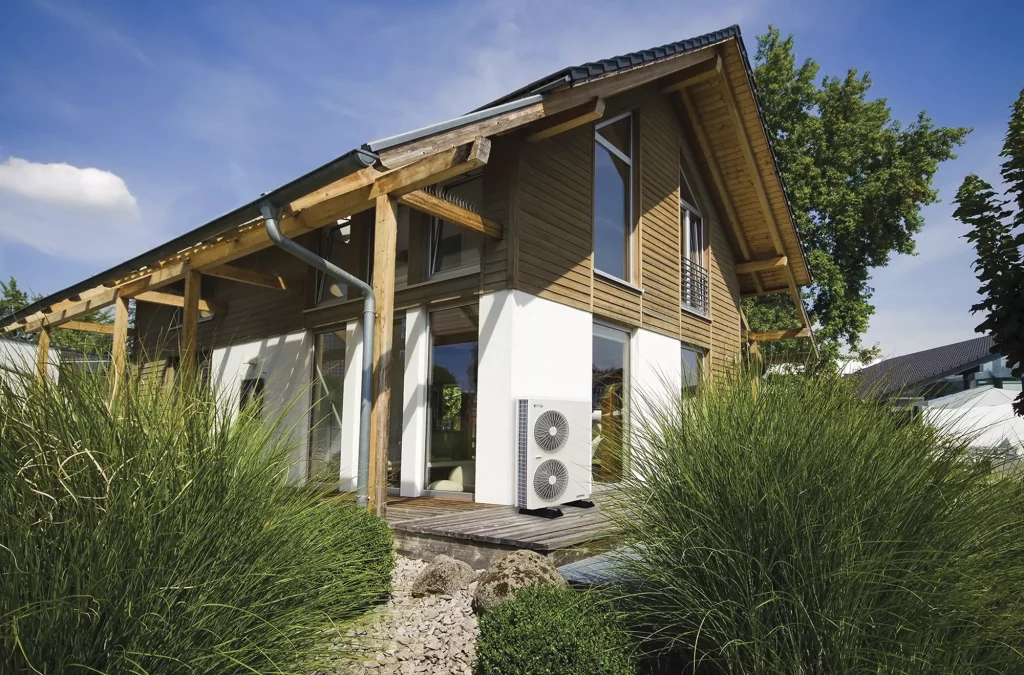
The Grant Aerona3 R32 inverter-driven ASHP achieves Quiet Mark certification as a low-noise heat pump, while delivering impressive efficiency
Is an air source heat pump right for my home?
Most air source heat pumps deliver a lower flow temperature than conventional appliances, such as gas boilers. This makes them an ideal partner for well-insulated new builds that maintain a constant interior temperature.
“Preventing warmth from escaping your home is particularly important if you’re planning on installing an ASHP,” says Scott Greening, managing director at Alto Energy. “Heat pumps aren’t designed to take a property from a cold to warm state as quickly as possible. Instead, they gently heat the fabric of the building and then continually provide warmth at the same rate it’s lost.”
The most effective setup tends to be an ASHP alongside underfloor heating (UFH). This creates a more comfortable living environment because the pump only needs to provide a low flow temperature of 30°C-35°C.
Older and draughtier properties require a higher operating temperature to maintain a pleasant internal climate. “Although ASHPs are capable of operating at 45°C-50°C, this reduces their efficiency, which will have an impact on the environmental savings you could make,” says Jeff Tomlinson, sales and marketing director at Waterkotte UK.
What are the benefits of air source heat pumps vs ground source?
One of the big advantages of air source heat pumps is that theycan be easily fitted on both new builds and renovations.
“ASHPs don’t require loops of underground piping like their ground source heat pump cousins. Where space is limited, air source will always be a more cost-effective and less disruptive option than drilling boreholes,” says Scott.
However, if you’re self building, the extra digging required to install the loop in your garden can be done at the same time as the other groundworks.
“Air source technology is often preferable over other renewables when the end-user doesn’t want to be hands-on with the appliance. For example, biomass boilers require the delivery of fuel pellets or chips and will need regular topping up,” says Jeff from Waterkotte.
As such, ASHPs are frequently the tech of choice for those who would prefer a low-maintenance system. They’re also easy to integrate into a scheme, as the internal part of the pump is no larger than a standard boiler.
How is an air source heat pump installed?
The heat pump itself is usually fitted outside in a position where it will receive good airflow. It then supplies hot water to the indoor unit (usually stored in a utility room or airing cupboard), which in turn delivers it to your chosen central heating emitters.
It can also supply a cylinder for domestic hot water.
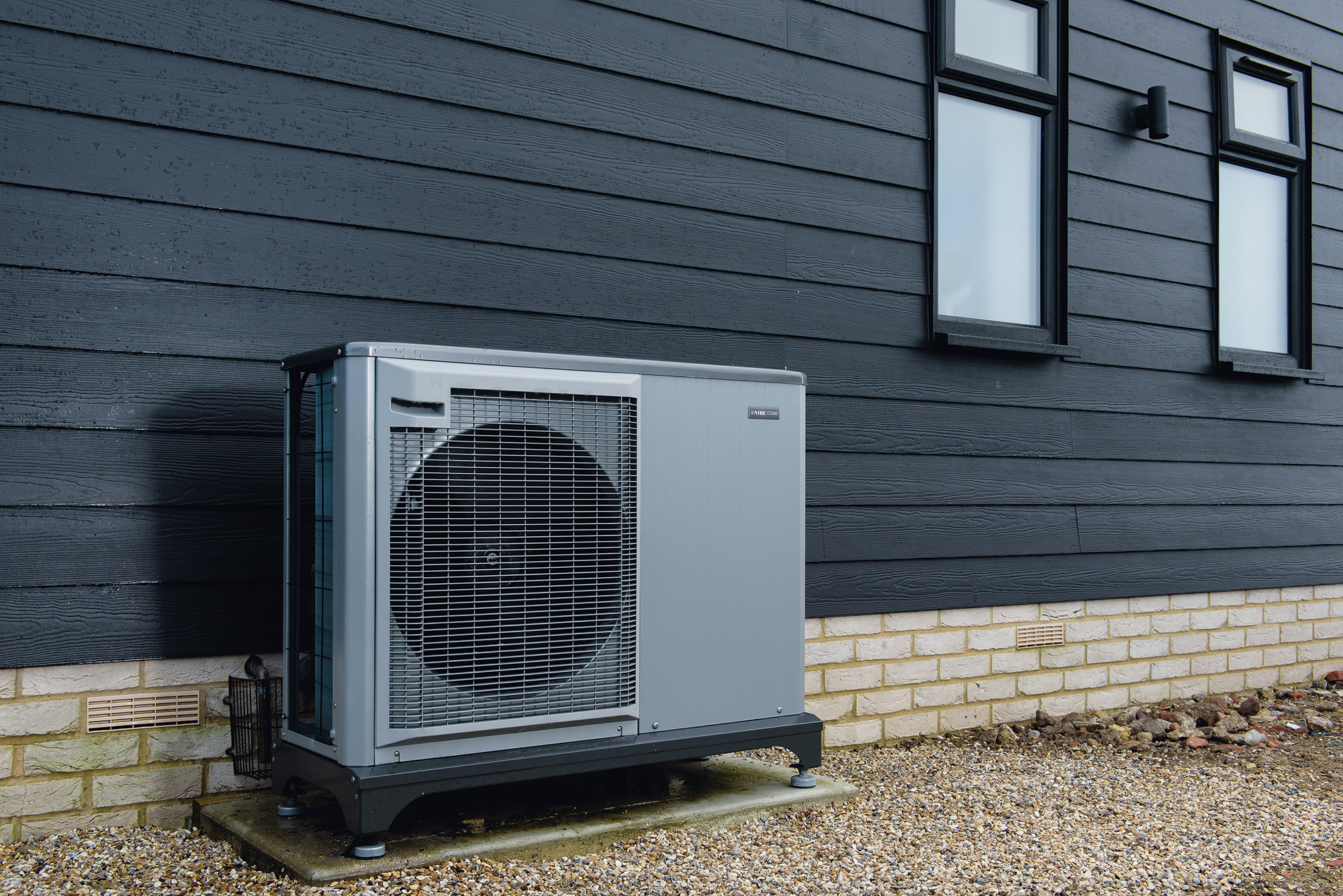
Air Source Heat Pump by NIBE
Your heating engineer will survey the house (or its planned performance) to determine the best size of air source heat pump, but as a guide a 4kW ASHP will provide the sufficient output for a typical three or four-bedroom home.
“The heat pump engineer will consider factors such as the building fabric, glazing, room dimensions and heat loss when calculating the required output” says Karen Trewick from Dimplex.
Because of the lower flow temperature ASHPs supply, they work best alongside emitters with larger surface areas, such as UFH or specially-designed oversized radiators.
What does an air source heat pump cost to install?
You can typically expect to pay £7,000-£12,000 to install an air-to-water heat pump system in a well-insulated three-bedroom home. For properties that require a higher heat output, this sum could rise.
Remember that final heat pump installation costs depend on a range of factors, such as the size of your home and whether you need to upgrade the insulation and/or heat emitters. Split systems are also generally more complex and expensive to install than monobloc air source heat pumps.
Currently, you can access a government grant of up to £5,000 to install an air source heat pump under the Boiler Upgrade Scheme (BUS). This drastically alters the equation, bringing some installations in line with the cost of a new gas boiler (boilers typically cost around £2,500 installed).
The BUS has funding of £450m, which equates to 90,000 heat pump installations – so may need to move quickly if you wish to access the grant.
Is an air source heat pump cheaper to run than a gas boiler?
Not necessarily. Much depends on the overall performance of your home, what proportion of heating is required for domestic hot water and the type of emitter you’re using.
As of November 2022, a unit of electricity costs 34p/kWh under the price cap. That’s roughly 3.4 times the price of gas at 10p/kWh. So, unless your air source heat pump runs at an SPF of above 3, it’s likely to cost marginally more to run than gas boiler-based central heating (assuming a modern boiler operating at about 90% efficiency).
From 1st April 2023, the energy price cap is set to change to 51p/kWh for electricity, and 13p/kWh for gas. At that tariff rate, an air source heat pump would need to have an SPF approaching 4 to deliver savings on your energy bills.
If your plot or property is off mains gas, however, a well-installed air source heat pump should deliver considerably bill svaings. It should also outperform an older gas boiler. And, as we’ll see in a moment, a heat pump should deliver lower carbon emissions than other forms of heating.
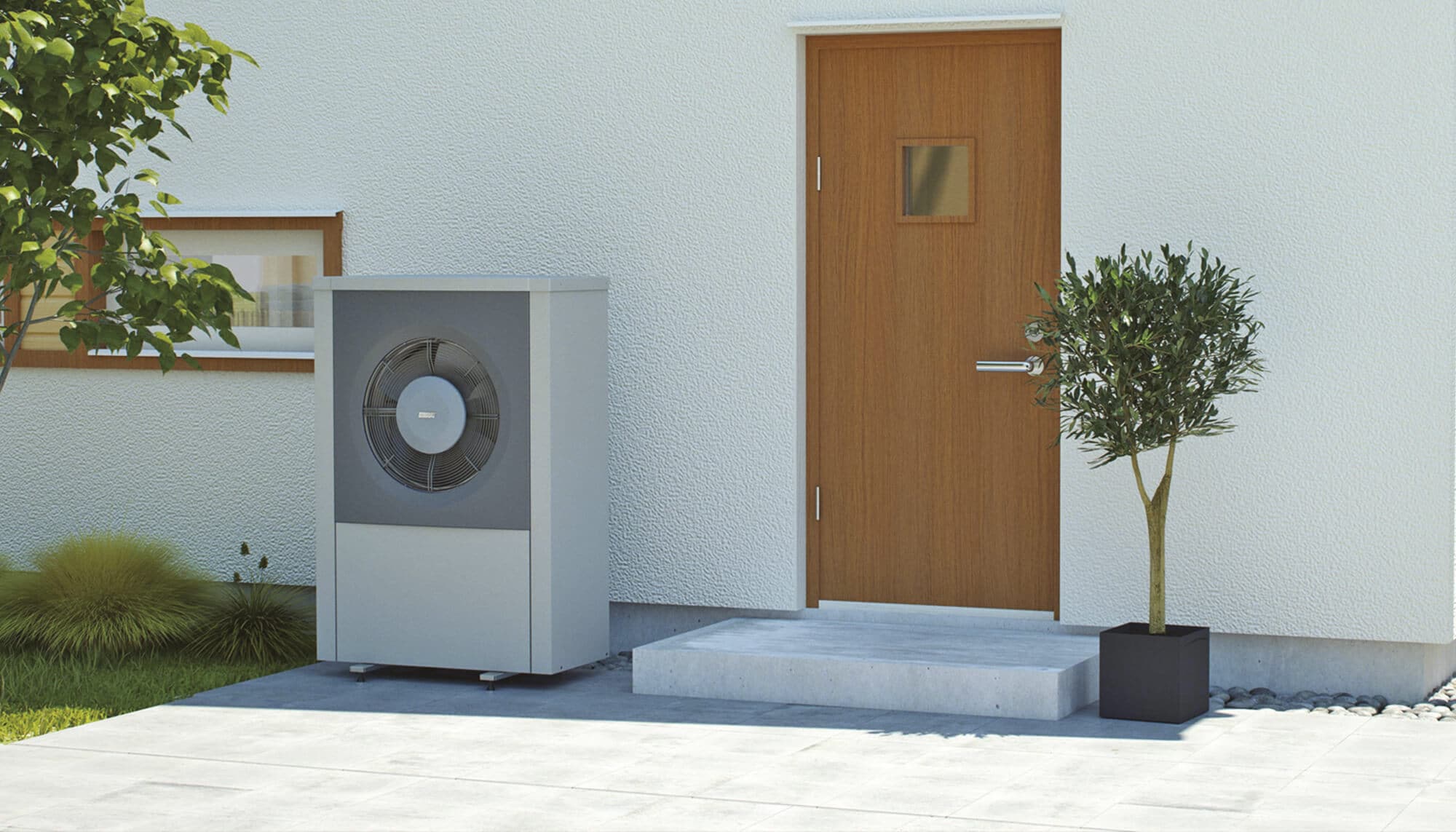
This Build It Award-winning ASHP offers a seasonally-adjusted COP of up to 4.84, as well as industry-leading sound performance. IVT AirX air source heat pump, Ice Energy
Will I save energy and carbon with an air source heat pump?
Sustainability-wise, a well-specified air source heat pump in a well-insulated house should deliver a low-carbon solution.
The Energy Saving Trust reckons you can save around 2,900kg of CO2 per annum compared to running a new A-rated gas boiler.
Plus, if you are on a dedicated green electricity tariff, you’ll reduce your reliance on fossil fuels.
Can an air source heat pump provide efficient domestic hot water for taps?
Heat pumps are designed to provide both space heating and hot water. However, they work most efficiently when heating the water cylinder to around 35-40C. This is lower than the usual temperature for domestic hot water (50C+).
Your air source heat pump therefore has to work harded to produce hot water for taps and showers, which means its performance will be slightly lower than for space heating.
There will also usually be a backup heat source (such as a boiler or an electric immersion heater) for those times when the heat pump can’t achieve the desired temperature. An alternative solution is the hybrid heat pump.
Again, performance is improving here. For instance, researchers at the University of Glasgow
have recently unveiled a prototype design that recovers energy from the pump’s operation, potentially improving efficiency by up to 10% when running at the high-output temperatures needed to provide domestic hot water.
Many households already happily use their heat pump to provide cost-effective heating and hot water. But if hot water demand is particularly high, then a standard heat pump may not always be the best choice.
What is a hybrid air source heat pump?
It is possible to retrofit an air-to-water heat pump in an older property. However, structures that aren’t insulated to current Building Regs standards may benefit from a hybrid model.
“These appliances can bridge the gap in houses where heat loss is too high for the building fabric to be warmed by an ASHP alone,” says Stephen Bancroft, heat pump team manager at EES Renewables.
The hybrid uses a combination of a heat pump and a gas boiler, calculating the efficiency from both sources and enabling whichever appliance will deliver the most cost-effective option.
“Once the efficiency threshold is breached – which is basically when the outside climate drops below 1°C-2°C – the ASHP relinquishes all heating demand to the boiler because at this point, higher flow temperatures will be required to maintain indoor comfort levels.”
Need more advice about heat pumps?Build It’s Self Build Virtual Training will give you the detailed know-how to successfully realise your dream home. Our interactive courses are presented by Build It’s expert contributors and designed to give you the key nuggets of knowledge you need – all from the comfort of your own home. Covering everything from finding land to planning permission and design, our courses take place online and allow for audience participation and experience sharing. Use the code TWENTY for 20% off. |
Air Source Heat Pump FAQ
This renewable tech takes warmth from the air and repurposes it for space heating. But is it the right option for your project?
Our expert Q&A goes beyond the basics to answer the in-depth questions you really want to ask.
What should you look for to make sure your ASHP is specified correctly?
Robin Adderley, from NIBE: Always appoint an installer who is registered with the Micro Generation Certification Scheme (MCS). This will ensure you get the best advice and gives you access to the Renewable Heat Incentive (RHI).
Phil Birchenough, from Sime: Your installer should always look at the efficiency of the house and what you need from your heating solution in order to offer you the best solution.
As with any system, upgrading insulation in existing homes is important. You should also be confident your engineer fully understands the product they are fitting.
Andrew McLauchlan, from Global Energy Systems: The unit should be specifically sized to account for local temperatures, too. It needs to be able to provide all the warmth a property demands, right down to this design temperature.
If an ASHP isn’t providing enough heat, then it’s been sized incorrectly.
In 2013, the Energy Saving Trust (EST) reported that most ASHP installations weren’t performing as well as expected. Has much changed since then?
David Hilton, from Heat and Energy: The EST report looked at the System Performance Factor, taking into account the heat losses of the whole house – it wasn’t just measured across the inlet and outlet of the heat pump itself.
So one of the key things to come out of it is that we should always compare like-with-like when we’re looking at things like the Seasonal Coefficient of Performance (SCOP).
The other major finding concerned installation quality. At the time, ASHPs were often being fitted as if they were boilers, rather than taking into account the tech’s unique performance criteria.
We’ve moved on quite a bit, and there are now more installers with specific heat pump experience.
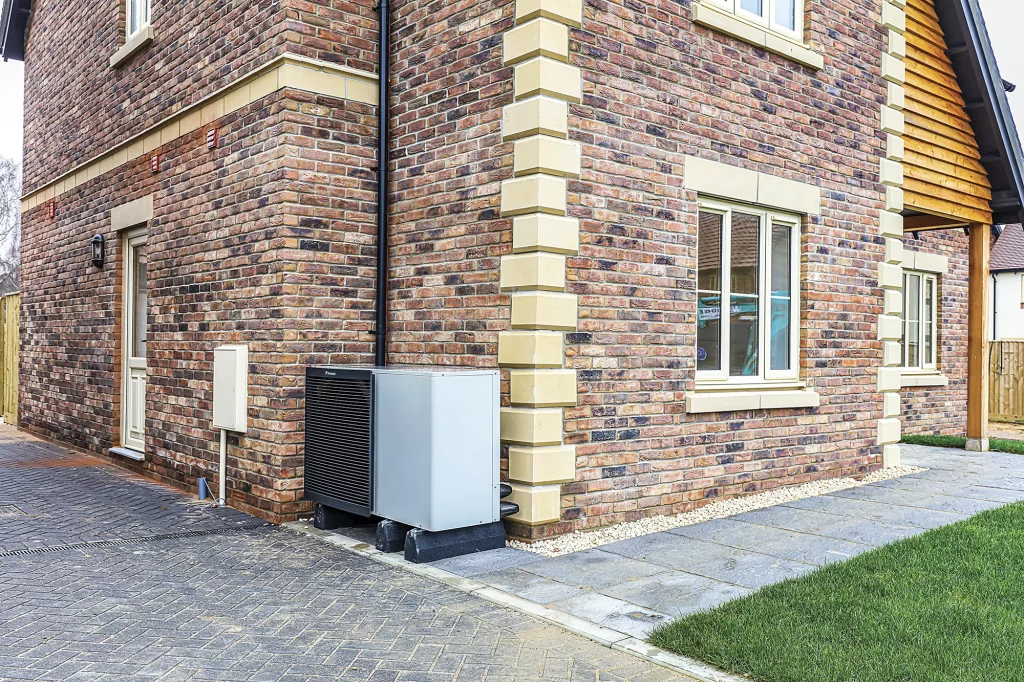
The Daikin Altherma 3 Monobloc heat pump features a black horizontal front grille to hide the single fan and reduce noise
Why do some suppliers still list the COP (coefficient of performance) rather than the SCOP. Isn’t the latter a better reflection of the appliance’s efficiency?
David Hilton: Suppliers will work with the data that the manufacturers give them. As a consumer, what’s important is that you make sure you’re comparing the same performance factors when looking at different models.
And remember that, while the SCOP is more detailed, it’s still a benchmark that’s been developed under controlled conditions rather than a real-life scenario.
Andrew McLauchlan: If you buy a car, you’re told its top speed to show its maximum performance. But you also look at the miles per gallon to get an idea of how it’ll perform in the real world.
We provide both the COP and the SCOP on our data sheets to make sure customers have all the information they need to make an informed decision.
One of the criticisms of air source heat pumps has been that they’re noisy. Has anything been done to improve this?
David Hill, from Carbon Legacy: If you go back 10 years, you’d have had to position your ASHP round the back of the garage – they were so noisy you wouldn’t have wanted them anywhere near the house.
The good manufacturers have looked very hard at this aspect, introducing clever fan technology with new shapes and blades. They’ve also focused on how the air is drawn in to the unit and how it comes back out.
It’s important to check exactly what claims are being made: is that 45dBA rating for when it’s running at full power, or does it shoot up to 60dBA?
The former is around the level of a washing machine or loud fridge – but at the 50-60dBA range, it will be a lot noisier.
An MCS-approved installer should give you a calculation to show how your appliance rates – if they don’t provide this, it’s a bit of a red flag.
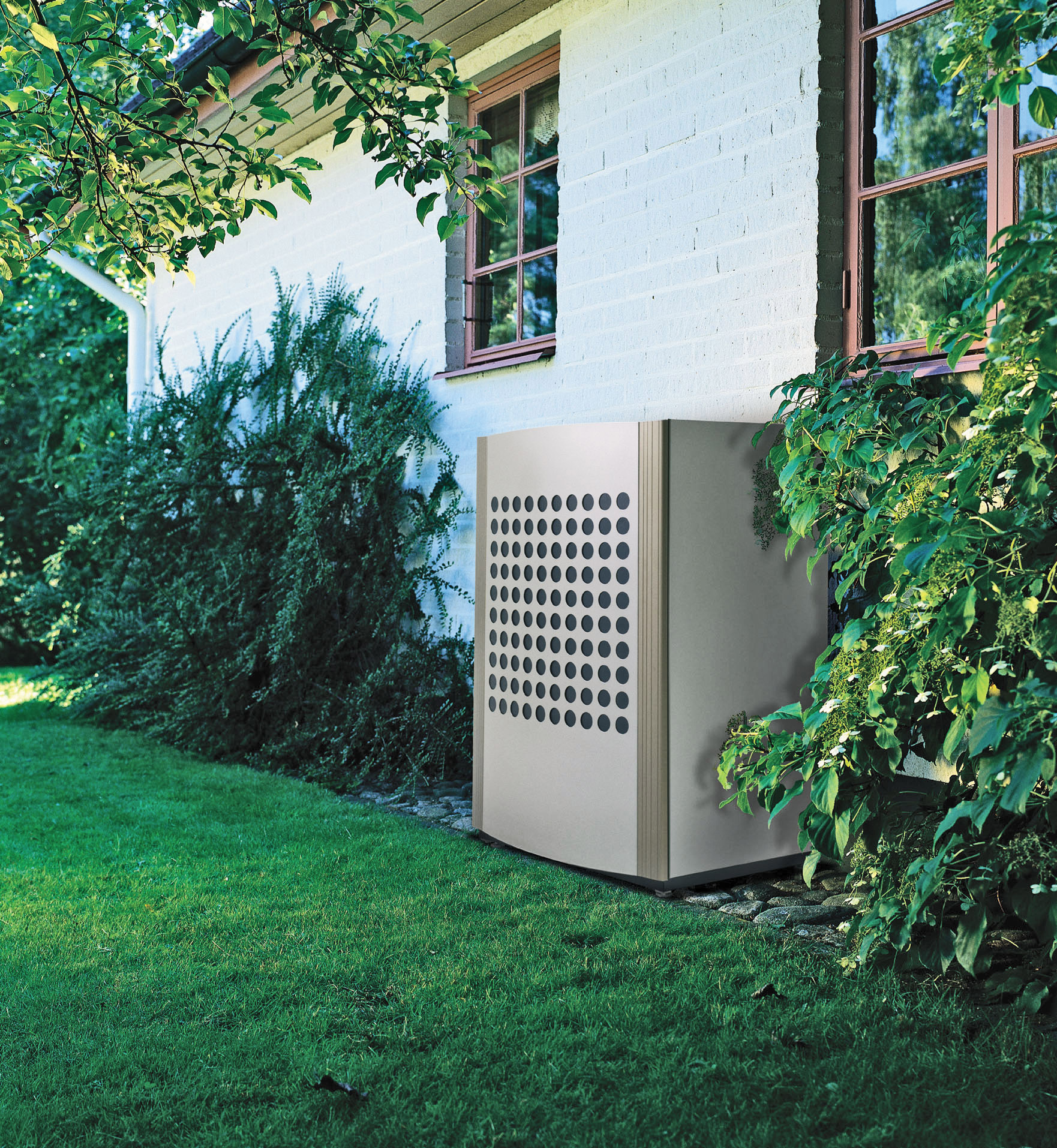
Worcester’s Greensource air to water heat pump external unit
Is it ever a good idea to fit an air source heat pump to an old boiler-fuelled radiator and pipework system?
Phil Birchenough: This depends on the operating temperature of the system.
Older emitters are designed to work with a conventional appliance (ie a boiler) that runs at a higher flow temperature. Connecting these to a heat pump will reduce their Delta T (the difference between the room temperature and that of the water within the central heating system).
Consequently, the warmth produced might not be sufficient to heat the entire house. So if you’re connecting an ASHP to an old pipework and radiator setup, an additional source of energy would be needed.
The most efficient approach is to fit a modern emitter system, such as underfloor heating or radiators designed to work at a lower flow temperature.
What impact does the heat transfer fluid have on ASHP sustainability?
David Hilton: Because there are so many different metals inside a heat pump and it’s a closed loop system, the transfer fluid usually includes some anti-corrosion components.
Vegetable-based eco versions are available, but in my view it’s better to go with a solution that protects the system and gives it longevity – an important part of sustainability. Some transfer fluids contain glycol and similar products that can be potential contaminants.
The Environment Agency won’t want to encourage any leaking of these. However, there are in-between solutions that biodegrade and still contain the anti-corrosion elements needed.
Your installer should specify an option that’s compatible with the manufacturer’s instructions and local Environment Agency guidelines.
How much guidance do installers give homeowners on getting the best performance from their heat pump?
Phil Birchenough: Post-installation, an engineer should do a thorough handover and advise the homeowner on how to make the most of their system.
They will have designed the setup to deliver maximum efficiency and output for the requirements of that property and should show you what settings are best for your needs.
Normally, they’ll tailor it to your preferences and give a full run-through of how you can change the operational settings. Ideally, they should also take you through some basic troubleshooting tips.
Read more: How to Combine Renewable Energy Sources
Can you use a heat pump to provide hot water – doesn’t the higher temperature needed just slash the COP?
David Hill: Different models offer different efficiency levels for supplying domestic hot water (DHW).
The first step is to pair the appliance with a special cylinder that works on a low flow temperature. This is fitted with a larger-than-usual heat exchange coil to transfer enough energy from the ASHP (the highest output temperature is 55°C) to get the water in the tank up to 50°C. Some installers might plug the ASHP into your existing cylinder, which almost certainly won’t work.
A new, well-insulated house might need around 20,000 kWh of heat per year for space heating, but only 3,000 for DHW. So it’s a small proportion of your overall usage.
The appliance will only run at its highest temperature for about two hours per day to provide this hot water. It’s automated, so a sensor keeps tabs on the tank all day and boosts the temperature if it drops below 45°C, before switching back to space heating only.
High quality versions will feature two sensors in the tank. This is important, as it reduces the risk of overheating the cylinder and wasting energy.
There’s a lot of talk about hybrid heating systems, combining boilers with ASHPs – is that an admission that heat pumps on their own don’t work?
David Hilton: No, because hybrid systems are designed for larger or harder-to-treat dwellings.
For example, you might have a stone barn where an ASHP would adequately heat it until external temperatures got down to maybe 5°C.
Every time it goes below that level, which might only be 10 or 20 days a year, the boiler kicks in. So we’re using the renewable tech in order to cut down oil or LPG usage, for instance.
There are also some ASHPs intended to work in slightly lower temperatures. In that case, you might have a hybrid setup where the heat pump would take care of the space heating and the boiler powers the hot water supply.
Robin Adderley: Hybrid systems have their place. However, in a new build dwelling that is sufficiently well insulated, an ASHP alone should provide all the space heating and hot water requirements.
In the case of retrofit systems, possibly in older properties that have a higher heat loss, combining the pump with an additional heat source may become more attractive in terms of capital cost.
This article was first published in 2016 and last updated in November 2022
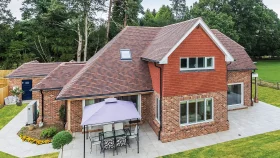






























































































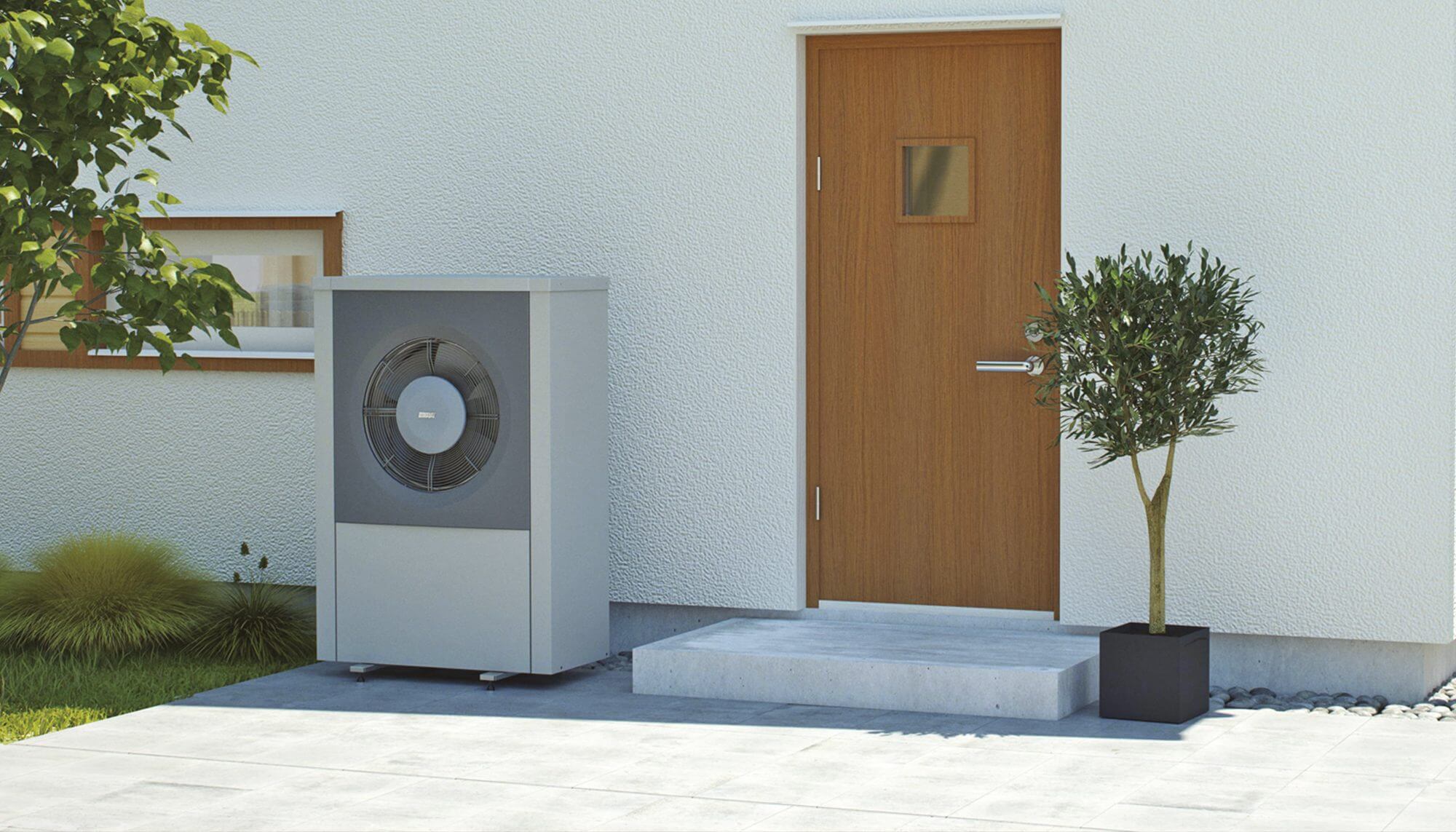
 Login/register to save Article for later
Login/register to save Article for later

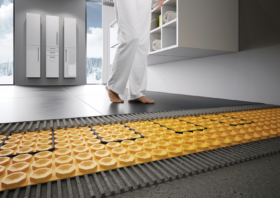



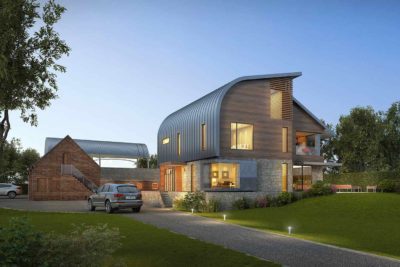
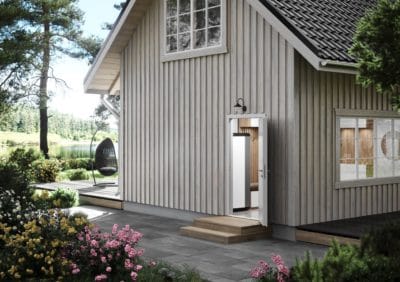
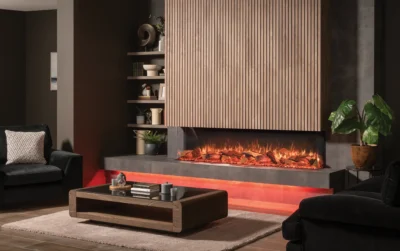
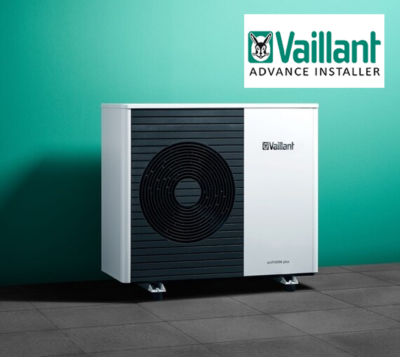





Comments are closed.